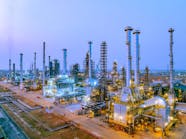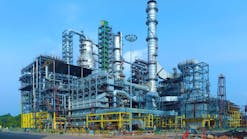The Eagle Ford shale is one of the largest oil fields in the US and quite possibly the largest single economic development in the history of Texas. With expenditures of $28 billion estimated in 2013, it also ranks as the top destination for energy companies to invest their capital.
The rapid increase in Eagle Ford oil production is paying huge dividends to the regional economy. According to a study conducted by the University of Texas at San Antonio, the Eagle Ford shale had a $61 billion impact in 2012 and supported 116,000 jobs in 20 counties in South Texas. In 2022, the play is expected to generate $89 billion and 127,000 jobs for the region.
The tremendous success of the Eagle Ford play has enabled it to become the benchmark for emerging tight oil plays worldwide. "The next Eagle Ford" is becoming a common catch phrase some use to describe new, up-and-coming plays. According to a recent study by Wood Mackenzie Ltd., however, the same level of commercial success in a new Eagle Ford analogue is not assured, although the play might be geologically similar.
Repeating success
"Three key commercial variables impact variations in value, including a country's taxes, local prices, and regional cost pressures," WoodMac said in its study, which was released Jan. 31. "Combined, they can render a potential Eagle Ford analogue project uneconomic, where a similar project would create considerable value in the Lower 48."
WoodMac's Unconventional Play Service modeled seven scenarios of foreign shale projects that have been likened to the Lower 48 Eagle Ford. The analogues include Vaca Muerta in Argentina, the Cooper basin in Australia, and the Sichuan shale play in China.
The model held well performance, well spacing, and drilling pace constant to reflect analogous subsurface and operational conditions and to isolate the commercial variables. The model then tested various combinations of local fiscal terms, costs, and prices, which varied according to WoodMac's commodity price assumptions for markets associated with each play. Output for each test was full-cycle net present value (NPV) at an annual discount factor of 10%.
"Our analysis shows that, together, higher regional prices and lower government take have the potential to double the NPV of an Eagle Ford-type asset abroad," WoodMac said in a press release. "However, the higher costs that come with executing an unconventional project outside the US are so significant that the price and tax gains are overshadowed in all three scenarios."
The statement said cost uplift factors specific to the countries assessed ranged from 35% to 60%.
Cost differences
A shale well in China costs about $15 million to drill and complete, according to economists at China National Offshore Oil Corp. That compares with a cost of about $6 million/well in the Eagle Ford.
In an analysis published in mid-2013, the US Energy Information Administration said that in many cases even much smaller cost differences can mean the difference between an economic and an uneconomic shale resource.
It remains to be seen whether a play with technical characteristics similar to those of the US Eagle Ford play can achieve comparable commercial success.
WoodMac suggested that to counterbalance high production costs outside North America, more-generous fiscal terms and stronger prices must coexist.
What's clear is that whether a play outside the US becomes the next Eagle Ford depends on more than geology.

Conglin Xu | Managing Editor-Economics
Conglin Xu, Managing Editor-Economics, covers worldwide oil and gas market developments and macroeconomic factors, conducts analytical economic and financial research, generates estimates and forecasts, and compiles production and reserves statistics for Oil & Gas Journal. She joined OGJ in 2012 as Senior Economics Editor.
Xu holds a PhD in International Economics from the University of California at Santa Cruz. She was a Short-term Consultant at the World Bank and Summer Intern at the International Monetary Fund.


